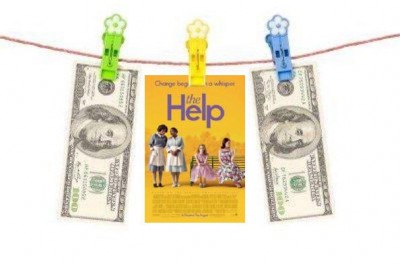Last updated on July 8th, 2022 at 01:05 pm
 Successful money management amid women’s competing priorities to still run the home, oversee the kids, and work full-time is not an easy undertaking.
Successful money management amid women’s competing priorities to still run the home, oversee the kids, and work full-time is not an easy undertaking.
Women of all ages and educational backgrounds struggle with the pressure to earn more, participate in training or upgrade their education often while tending to family needs, staying physically fit, and planning a decent retirement.
It’s challenging to take the time or find the motivation to educate yourself about complex financial decisions that will help you achieve some financial security.
Every decision you make is always somehow wrapped up in your finances or your emotional shame surrounding money.
In a financial survey of 1,048 US adult women, only 36% said they make enough money to live comfortably, while 51% said their income feels somewhat or very low. The survey also uncovered that many women lack the financial education needed to make sound saving and investment decisions. (Source: CK Survey)
If your big dream is like mine to become the master of your finances, I thought I’d talk about the financial realities for women and the financials from the book and movie, “The Help” as my example.
11 Financial Facts About The Help
1. It took author, Kathryn Stockett 5 years to write The Help and another 3 years to find a publisher. Figure a 1080-hour work year. That’s 8,640 hours.
2. At 90 cents per hour, the maids in the book would have earned $7,776 for those eight years.
3. Ninety cents per hour in 1963 is the equivalent of $7.21 per hour in 2011. The federal minimum wage standard is about $7.25.
4. The Help novel sold more than 10 million copies. At an average price of $16, that’s $160 million. (But check my math. That many zeroes made me dizzy).
5. I don’t know how much Stockett made from the book. However, I did find some publishing averages. An author might pay between 17 cents and $1 per copy of a book sold. Even at the low number, Stockett might have earned at least $850,000. That’s about $100 per hour for the eight years she spent writing and selling it.
6. The film version of the best-selling book cost $25 million to make.
7. In the first two days of release, the box office gross was $9.9 million.
8. The box office weekend release was $26,044,590, thereby turning a profit.
9. I don’t know how much Stockett made from the movie, but with her impressive book sales, which translate into ticket sales, I’m sure she did pretty well.
10. Kathryn Stockett was sued for $75,000 by her brother’s nanny, who happens to be black and named Abilene. If you haven’t read the book or seen the movie, one of the main characters is a black maid named Aibileen. The case was ultimately thrown out of court.
11. Kathryn Socket is now believed to be worth $10 Million and has not published a second book.
And why am I talking about The Help in a financial post? Because I think the business model around The Help was way, way ahead of its time. Kathryn Sockett invested in her book upfront. Unless you are a best-selling author, like Elisabeth Gilbert, you can’t have an idea for a book, call up a publisher, and say: I’ll write this book for you if you’ll pay me $100,000 while I’m writing it, and then royalties when it sells.
That is not the normal business model for new and inexperienced authors.
To make any money, a new author typically has to write the book first, as Kathryn Stockett did, and then market it, rewrite it, market it, rewrite it, and stick with it for however long it takes to get it published. If it ever does get published at all.
In other words, the author has to believe in the value of the book and has to be able to demonstrate the value to a publisher. In Sockett’s case, The Help was rejected by 60 literary agents, over a period of three years.
Earning money as an author is connected with the value delivered–not the hours spent writing and marketing it.
Imagine if you set your business up on the same kind of model, where you invest it all up front, demonstrate the value, and then ask for the fee. I’m not talking about a free trial or a restricted license or a set of screenshots. I’m talking about the full monty.
Authors don’t typically get paid for sample chapters–they get paid for complete manuscripts. Sometimes they don’t even get paid for that; they have to wait for actual sales. As I said, the dollars connect with the value delivered, not the value predicted. Add in the research that has revealed that books by women released by mainstream publishers are priced on average 45% lower than books by men.
When I was a girl, my mother persuaded me to prepare for a professional career–one with a salary and security–instead of setting my sights on becoming a poet or novelist. She thought it was too risky to be a poet or novelist. You might never get published and never get paid. A career was the sure bet.
Seems quaint 30 years later. Who would have thought that investing one’s time up front is nothing more than an idea turns out to be the surer bet?
But if you think about how investing is supposed to work, you need to be paying yourself first–you invest in yourself first.
Paying yourself first is something men tend to be better at than women. If we approached investing like Kathryn Sockett approached writing and publishing The Help, you’d invest your time and resources into your financial future FIRST–before you spend–even if in the beginning you can barely scrape together $5.00 a paycheck to pay yourself or the change in your cookie jar.
But the secret to a better financial life begins with you setting something aside for yourself first.
If you are not sure you have $5.00 to set aside, consider one of the many online services for budgeting (like Buxfer) where you can set up a free account and get started on a budget with a free basic plan.
Begin by putting aside whatever shame you feel about money or your current financial situation and start with just one new habit of paying yourself first. Because you are kind. You are smart. And you are important.
Jayne Speich
Jayne Speich is a small business coach and consultant who writes, preaches, and trains extensively on customer service, business finance, and ways to thrive in the new economy.
 |  |  |  |

Enjoy this special 8WomenDream Guest Contributor story submitted by new and experienced big dreamers throughout the world, edited and published to capture a dream perspective from different points of view. Do you have a personal dream story to share with 8WomenDream readers? Click here to learn how to submit dream big articles for consideration.
Note: Articles by Guest Post Contributors may contain affiliate links and may be compensated if you make a purchase after clicking on an affiliate link.



